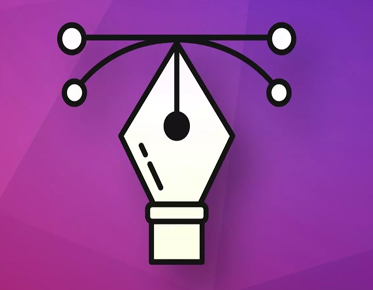A Creative Comparison of Embroidery and Embroidery Puff
In the captivating realm of textile artistry, two techniques stand out as intricate and visually captivating: embroidery and embroidery puff. Both techniques involve carefully placing threads and other materials on cloth, but the textures and results they produce are very different. This blog explores the creative differences between embroidery and embroidery puff, highlighting their special qualities, uses, and the magic they impart to the textile industry.
Embroidery: The Timeless Tapestry of Thread
Embroidery, a technique that has traversed centuries, involves embellishing fabric with thread and sometimes additional elements like beads, sequins, and even precious metals. This age-old art form has graced garments, accessories, and decorative pieces, seamlessly blending form and function. The key to the magic of embroidery lies in the intricate stitches that come together to create stunning visuals and textures.
Unique Qualities of Embroidery:
Variety of Stitches: From the delicate satin thread to the strong chain stitch, embroidery uses a wide range of stitches. The cloth gains a distinctive texture and character with each stitch, enabling designers to create complex patterns.
Dimension and Texture: The layered stitches used in embroidery give fabric a tactile feel. The end result is a visual and tactile feast, whether it is the elevated look of a padded satin stitch or the delicate flatness of a running thread.
Versatility: Embroidery can be found on a variety of items, including apparel, accessories, home goods, and even fine art. Every item benefits from the charm and beauty that needlework adds, from elaborate monograms on handkerchiefs to delicate floral designs on wedding dresses.
Elevating Textures to New Heights with Embroidery Puff
The craft of working with thread is elevated by embroidery puff, commonly referred to as 3D or raised embroidery. In contrast to conventional stitching, which produces flat patterns, embroidered puff concentrates on giving fabric a raised, three-dimensional appearance. Design elements are given depth and dimension using this method, which makes them appear almost sculptural as they emerge from the surface.
Defining Features of Embroidery Puff:
Layered Padding: The defining feature of embroidery puff is the use of padding material beneath the stitching. This padding elevates certain areas of the design, resulting in a raised, textured effect.
Dimensional Impact: Embroidery puff's primary appeal lies in the illusion of depth it creates. Designs appear to jump off the fabric, creating a stunning visual impact.
Enhanced Details: This technique excels in highlighting intricate details in a design. By raising specific elements, artists can emphasize curves, contours, and fine lines.
Variety of Materials: While traditional embroidery predominantly uses thread, embroidery puff may incorporate a variety of materials for padding, including foam, felt, or even additional layers of fabric.
Accepting Contrast and Harmonizing Art
The juxtaposition of embroidery and embroidery puff brings forth a dynamic interplay of artistry that enriches the textile landscape. These techniques, though distinct, echo the endless possibilities encapsulated within the world of creative expression.
Artists often find themselves drawn to one technique over the other based on the narrative they wish to communicate and the effect they intend to achieve. While embroidery captivates with its intricate stitches and versatility, embroidery puff entrances with its striking depth and sculptural allure.
In the tapestry of creativity, whether through the refined elegance of embroidery or the striking dimensionality of embroidery puff, both techniques remind us that every thread, every stitch, every layer contributes to the intricate fabric of human imagination and innovation. The canvas is not merely fabric; it is a portal to stories, emotions, and an eternal dance of artistic expression.
Conclusion
As we conclude our exploration of the artistic contrast between embroidery and embroidery puff, we are left marveling at the diverse ways in which human creativity is woven into the very fabric of textiles. These techniques, though rooted in the meticulous placement of threads, diverge into distinct realms of expression, each with its unique allure.
Embroidery, with its rich history and intricate stitches, carries with it a timeless elegance that graces everything from couture dresses to everyday accessories. Its ability to blend form and function, and to tell stories through the interplay of threads, showcases the versatility and enduring appeal of this art form.
On the other hand, embroidery puff, with its sculptural qualities and captivating depth, elevates textile artistry to new heights. It engages our senses, urging us to not only see but also feel the textures and dimensions it creates. The illusion of designs leaping off the fabric invites us to embrace the tactile beauty that textiles can offer.
As artists and enthusiasts, we find ourselves standing at the crossroads of tradition and innovation, choosing between the classic elegance of embroidery and the dynamic depth of embroidery puff. But in this choice lies the magic of creativity—the power to shape narratives, evoke emotions, and leave an indelible mark on the canvas of human expression.
In the vast landscape of textile art, there's a place for both techniques. They complement each other, allowing us to embrace the interplay of flat elegance and sculpted dimensionality. Whether we opt for the intricate stitches of embroidery or the captivating depth of embroidery puff, both techniques remind us that every thread, every stitch, and every texture contribute to the rich tapestry of our creative journey.
Ultimately, the distinction between embroidery and embroidery puff isn't about choosing one over the other; it's about recognizing the boundless possibilities they offer and celebrating the diversity that makes the world of textile art a realm of endless fascination and wonder.



